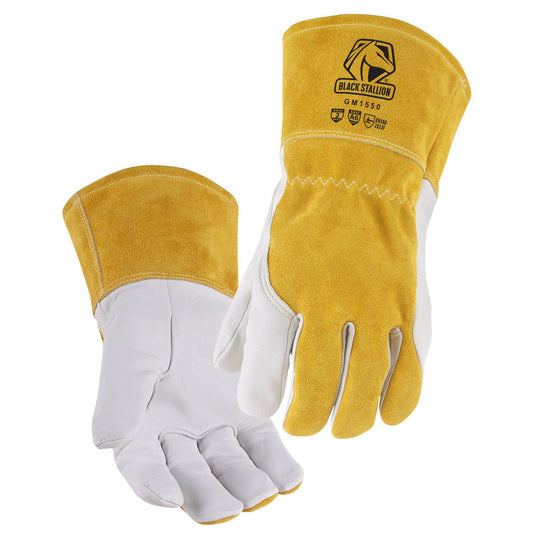MIG welding uphill is a hot topic in many welding forums because it’s generally easier to MIG weld downhill, and you’ll read plenty of experienced welders who claim they’ve never done anything other than welding downhill. However, there are certain situations where MIG welding uphill is a must, and you could compromise the strength of your weld if you weld downhill instead of uphill. In this post we’ll hit on some different applications that call for uphill MIG welding as well as some tips from the pros.
When to MIG Weld Uphill
For short circuit MIG welding on thick metal (say thicker than a 1/4”) that needs to hold, especially for structural welds, welding downhill won’t provide the penetration you need to burn into the metal. By welding uphill you’ll be able to penetrate deeper into the metal, stacking the weld up and giving it time to penetrate into the joint.
For thin metal, such as on automotive welds, you can weld downhill and even do a stringer. The big difference comes with the metal thickness. The thicker your metal, the harder it is to penetrate the metal going downhill. If you read about someone “always” welding downhill with MIG, chances are that person was working with thin metal or didn’t need to worry about creating a weld that could withstand a lot of stress and impact.
You’ll find a lot of opinions on the best way to MIG weld uphill or whether you should even do it at all. Assuming that you need to make a strong weld on thicker metal, here are some tips for successful uphill MIG welding.
Settings for Uphill MIG Welding
When you weld uphill, you’ll be overlapping a bit—what is usually called “weaving”—as you work your way up. You cannot MIG weld uphill on thicker metal with a stringer. Therefore, since you’ll be weaving your way up the work piece, you’ll need to reduce your power to about 10 or 15% of what you typically use.
As you practice your positioning before laying your first bead, also keep in mind that your gun angle should be about 5 or 10 degrees. If you’re watching some welding videos online before getting to work, remember that these welders sometimes need to use a little more torch angle than is necessary in order to shoot their videos.
If you just can’t get enough penetration into the weld joint, keep in mind that stick welding tends to be more effective for uphill welding on thick metal, especially if you’re inexperienced and you need to get the job done before you’ve had a chance to practice.
Triangle uphill welding
There are two ways to weld uphill. Both methods have been tested and proven to produce relatively similar welds, with the triangle method producing a slightly larger crown than the other method—known as the upside down V.

For the triangle method, move the arc from one side to the other, crossing the middle and only pausing for a second or two on the other side before you move your torch to the top of the puddle where you pause again. Then move your torch back down before whipping it back across again.
Upside Down V MIG Welding
The key to the upside down V uphill MIG welding technique is tracing the edge of the puddle. In other words, you gradually weld uphill by moving your arc to the front of the puddle, tracing it back and forth uphill in a steady V motion. You don’t want to pause in the middle and beware going beyond the edge of your weld joint as you move back and forth.
If you’re working with a lap joint, be especially careful to not jump off the metal. Just nip the corners, but keep the gun pointed to the edge of the puddle, leading it up the work piece.
When Vertical MIG Welding Goes Wrong
If you have to chase your weld downhill, you’re not getting the right penetration you need for your weld. Your settings should be hot enough to penetrate without sending the filler running down the joint. You need to be able to control your travel speed so that you can pump enough metal into the joint. However, too much heat can add too much metal, and then your weld will be a mess with hot, dripping metal.

Stopping too long in the middle will also add too much material to your weld and lead to a rounded “crown” on your weld joint. If you need to make a clean weld that looks right for your welding business clients, remember to pause on the edges, not in the middle, for the best results.



